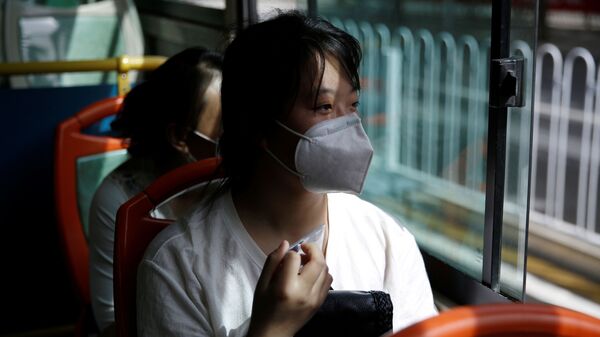Surgical masks can reduce the rate of transmission of COVID-19 up to 79 percent among people sharing the same household, but only when used before symptoms emerge, according to the latest peer-reviewed study published in the British Medical Journal.
Researchers questioned 460 people from 124 families in Beijing, China. Family sizes ranged from two to nine people and were usually made up of three generations. Each household had at least one confirmed case of COVID-19 between late February and late March 2020. The same study also says that using disinfectant was 77 per cent likely to reduce the spread of the virus than not using it.
Raina MacIntyre is professor of Global Biosecurity at the University of South Wales, Sydney Australia and is one of the 16 authors of the study, entitled Reduction of secondary transmission of SARS-CoV-2 in households by face mask use, disinfection and social distancing: a cohort study in Beijing, China. She explains that using the right type of face masks may prove key to reducing the spread of COVID-19 among families.
Sputnik: How can it be that wearing a mask only helps if it is being worn by people when they are asymptomatic but not help when they are showing symptoms of COVID-19?
Professor Raina MacIntyre: The virological studies show that the highest amount of virus (and therefore the highest risk of infection) is in the 2 days before symptoms start. This study provides real-world confirmation of the virological data.
Sputnik: Surely it isn't realistic to expect people, who are not showing any symptoms, to regularly wear masks in their own homes?
Professor Raina MacIntyre: I think in a community where there is a lot of infection, or where one family member is at high risk of infection (for example if they are a health worker working on a COVID-19 ward), it is possible to observe hygiene measures at home such as daily disinfection of commonly touched surfaces, wearing a mask and avoiding close contact.
It may vary culturally, but it is possible, as shown in the study. I have certainly heard of families in Western countries using masks, for example, where one is a health worker. It may also be useful to wear a mask when a new person joins the household (for example, someone who has returned from travel) - mask wearing for the incubation period could reduce the risk.
Sputnik: There are many types of masks out there. What types of masks are relevant to your study?
Professor Raina MacIntyre: The masks used by families were surgical masks.
Sputnik: To what extent do further and possibly larger studies need to be conducted on this subject?
Professor Raina MacIntyre: The more research there is, the better. The current debate about community mask use is not resolved as yet.
Sputnik: How should our behaviour change, if at all, as a result of what's been discovered?
Professor Raina MacIntyre: The study shows that practising hygiene in the household - daily disinfection of commonly touched surfaces, wearing a mask and avoiding close contact - can reduce the risk. If you live in a city or area with a lot of community transmission, or with someone who is at high risk, these measures will help. In crowded settings where you cannot maintain spatial separation, using hand sanitiser and wearing a mask may be protective.
Sputnik: What policy recommendations, if any, could be made following your study?
Professor Raina MacIntyre: If masks protect in one of the highest risk settings, the household, they should also protect in crowded public spaces. If you are on a bus or a train, wearing a mask may protect others if you are asymptomatically infected; and may protect you if you are well. The data support community mask use.




